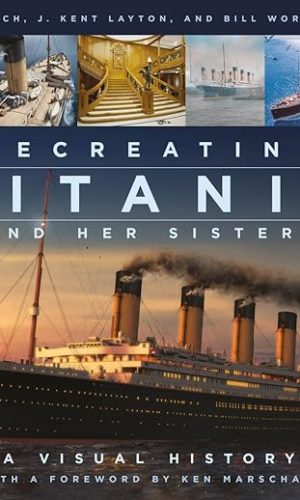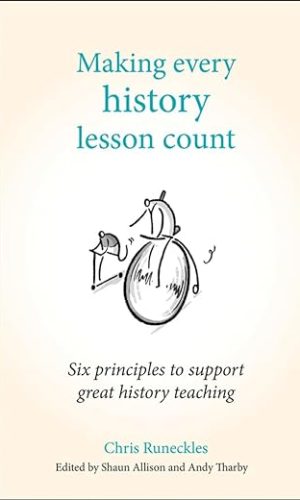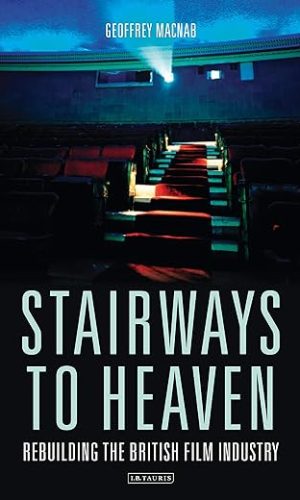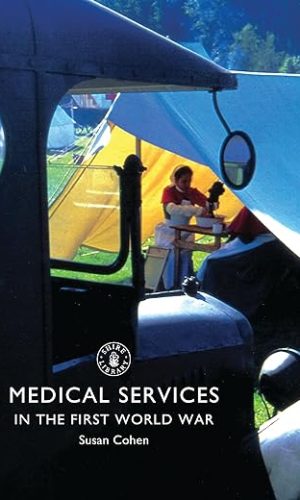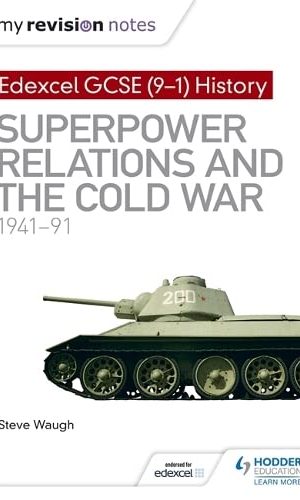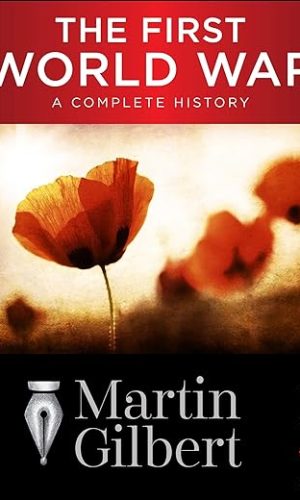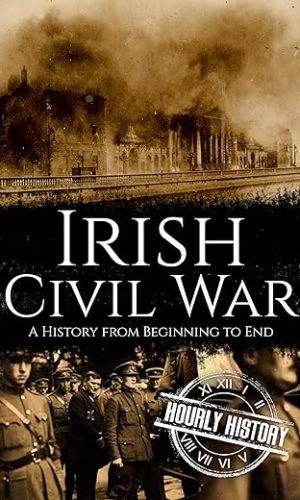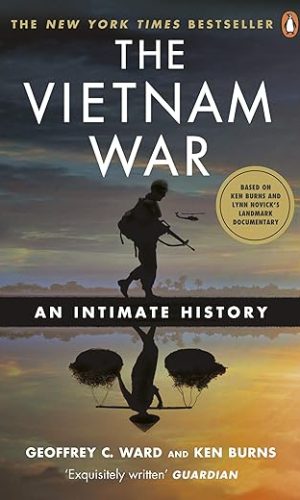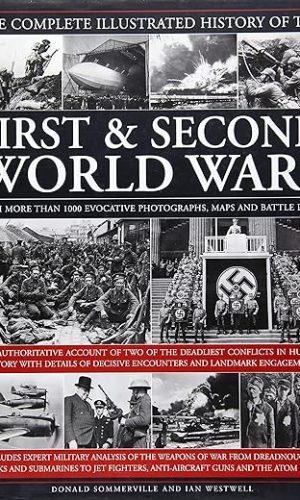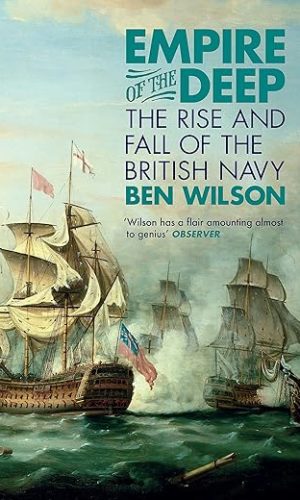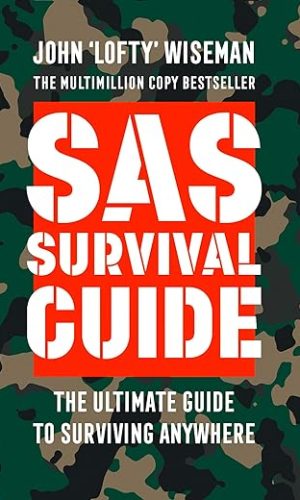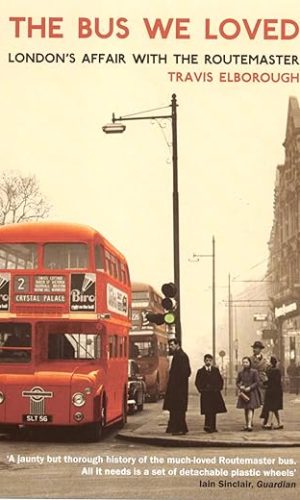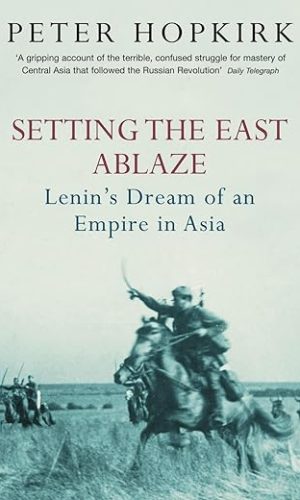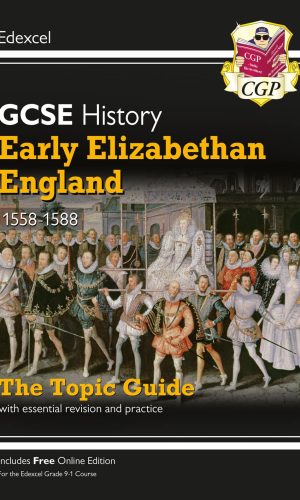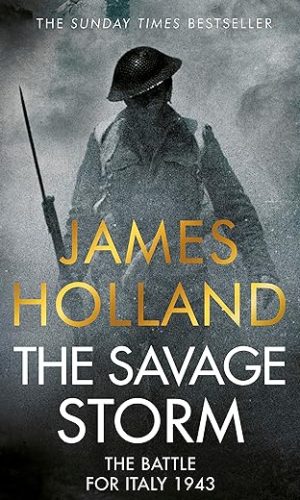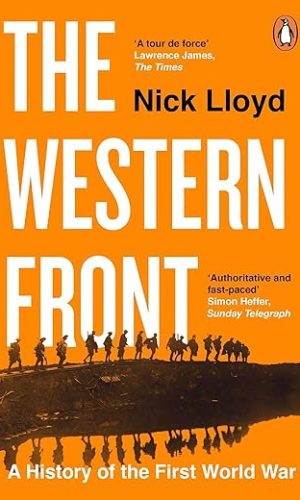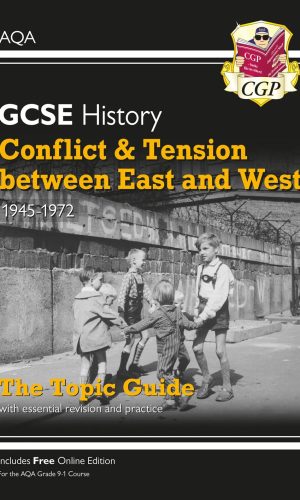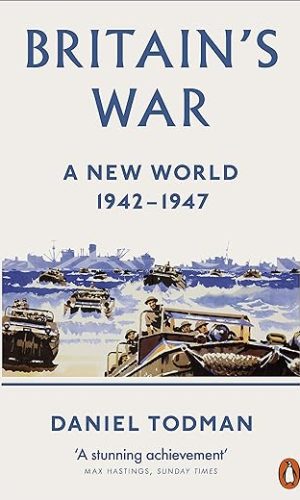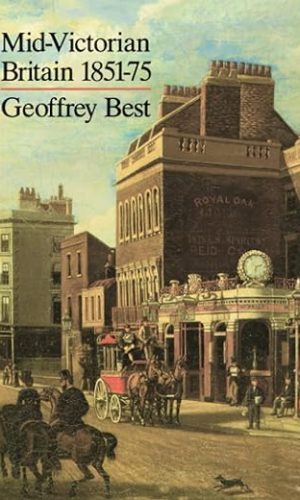-
Recreating Titanic and Her Sisters: A Visual History
On the night of 14–15 April 1912, Titanic, a brand-new, supposedly unsinkable ship, the largest and most luxurious vessel in the world at the time, collided with an iceberg and sank on her maiden voyage. Of the 2,208 people on board, only 712 were saved. The rest perished in the icy-cold waters of the North Atlantic, and the tragedy has fascinated and perplexed the world ever since.
This stunning book tells the story of not just the Titanic, but also of its sister ships, Olympic and Britannic. Maritime experts J. Kent Layton, Tad Fitch, and Bill Wormstedt tell the stories of these legendary liners with a compelling narrative alongside original artwork from up-and-coming artists, bringing to life the design, construction and service of the ships together with the wrecks of the ill-fated Titanic and Britannic.
From the cold, starry night when Titanic collided with her iceberg to the tragic wartime loss of Britannic and the impressive reliability of the long-lived Olympic, this cinematic and immersive new study captures all of the glory and drama of the Olympic-class age and allows readers to visualise Titanic and her sisters like never before.
Read more
£25.70£38.00Recreating Titanic and Her Sisters: A Visual History
£25.70£38.00 -
My Revision Notes: OCR AS/A-level History: The Cold War in Europe 1941–1995
Exam board: OCR
Level: A-level
Subject: History
First teaching: September 2015
First exams: Summer 2016Target success in OCR AS/A-level History with this proven formula for effective, structured revision; key content coverage is combined with exam preparation activities and exam-style questions to create a revision guide that students can rely on to review, strengthen and test their knowledge.
– Enables students to plan and manage a successful revision programme using the topic-by-topic planner
– Consolidates knowledge with clear and focused content coverage, organised into easy-to-revise chunks
– Encourages active revision by closely combining historical content with related activities
– Helps students build, practise and enhance their exam skills as they progress through activities set at three different levels
– Improves exam technique through exam-style questions with sample answers and commentary from expert authors and teachers
– Boosts historical knowledge with a useful glossary and timeline
Read more
£9.50 -
Making Every History Lesson Count: Six Principles to Support Great History Teaching (Making Every Lesson Count series)
Chris Runeckles’ ‘Making Every History Lesson Count: Six principles to support great history teaching’ offers lasting solutions to age-old problems and empowers history teachers with the confidence to bring their subject to life.
‘Making Every History Lesson Count’ goes in search of answers to the crucial question that all history teachers must ask: What can I do to help my students retain and interrogate the rich detail of the content that I deliver?
Writing in the practical, engaging style of the award-winning Making Every Lesson Count, Chris Runeckles articulates the fundamentals of great history teaching and shares simple, realistic strategies designed to deliver memorable lessons. The book is underpinned by six pedagogical principles challenge, explanation, modelling, practice, feedback and questioning and equips history teachers with the tools and techniques to help students better engage with the subject matter and develop more sophisticated historical analysis and arguments.
In an age of educational quick fixes and ever-moving goalposts, this carefully crafted addition to the Making Every Lesson Count series expertly bridges the gap between the realms of academic research and the humble classroom. It therefore marries evidence-based practice with collective experience and, in doing so, inspires a challenging approach to secondary school history teaching.
‘Making Every History Lesson Count’ has been written for new and experienced practitioners alike, offering gimmick-free advice that will energise them to more effectively carve out those unique moments of resonance with young people. Each chapter also concludes with a series of questions that will prompt reflective thought and enable educators to relate the content to their own classroom practice.
Suitable for history teachers of students aged 11-16 years.
Read more
£14.20 -
Stairways to Heaven: Rebuilding the British Film Industry
What has brought about the transformation of the British film industry over the last few decades, to the beginnings of what is arguably a new golden era? In the mid-1980s the industry was in a parlous state. The number of films produced in the UK was tiny. Cinema attendance had dipped to an all-time low, cinema buildings were in a state of disrepair and home video had yet to flourish. Since then, while many business challenges especially for independent producers and distributors remain, the industry overall has developed beyond recognition. In recent years, as British films have won Oscars, Cannes Palms and Venice Golden Lions, releases such as Love Actually, Billy Elliot, Skyfall, Paddington and the Harry Potter series have found enormous commercial as well as critical success. The UK industry has encouraged, and benefitted from, a huge amount of inward investment, much of it from the Hollywood studios, but also from the National Lottery via the UK Film Council and BFI. This book portrays the visionaries and officials who were at the helm as a digital media revolution began to reshape the industry. Through vivid accounts based on first-hand interviews of what was happening behind the scenes, film commentator and critic Geoffrey Macnab provides in-depth analysis of how and why the British film industry has risen like a phoenix from the ashes.Read more
£14.20 -
Medical Services in the First World War (Shire Library)
The number of wounded in the First World War was unprecedented, and inadequate military planning presented the medical and voluntary community with huge and daunting challenges. Yet in the face of tremendous adversity both tackled their work with resourcefulness, courage and great humanity. This book is the illustrated story of those who risked their lives collecting casualties from the front line, of the various transport and treatment facilities at their disposal and of the eclectic mix of buildings in which the wounded were cared for at home, including many famous country houses. The vital part played by nurses, both in terms of essential medical duties and in boosting morale among the patients, is also examined, rounding off this perfect introduction to medical care in the First World War.Read more
£7.60£8.50 -
My Revision Notes: Edexcel GCSE (9-1) History: Superpower relations and the Cold War, 1941–91 (Hodder GCSE History for Edexcel)
Exam Board: Pearson Edexcel
Level: GCSE
Subject: History
First teaching: September 2016
First exams: Summer 2018Endorsed for Edexcel
Target success in Edexcel GCSE (9-1) History with this proven formula for effective, structured revision.
Key content coverage is combined with exam-style questions, revision tasks and practical tips to create a revision guide that students can rely on to review, strengthen and test their knowledge.
With My Revision Notes every student can:
> Plan and manage a successful revision programme using the topic-by-topic planner
> Enjoy an interactive approach to revision, with clear topic summaries that consolidate knowledge and related activities that put the content into context
> Build, practise and enhance exam skills by progressing through activities set at different levels
> Improve exam technique through exam-style questions and model answers with commentary from expert authors and teachers
> Get exam ready with extra quick quizzes and answers to the activities available online
Read more
£4.70 -
The First World War: A Complete History
“A stunning achievement of research and storytelling” that weaves together the major fronts of WWI into a single, sweeping narrative (Publishers Weekly, starred review).
It was to be the war to end all wars, and it began at 11:15 on the morning of June 28, 1914, in an outpost of the Austro-Hungarian Empire called Sarajevo. It would officially end nearly five years later. Unofficially, however, it has never ended: Many of the horrors we live with today are rooted in the First World War.
The Great War left millions of civilians and soldiers maimed or dead. It also saw the creation of new technologies of destruction: tanks, planes, and submarines; machine guns and field artillery; poison gas and chemical warfare. It introduced U-boat packs and strategic bombing, unrestricted war on civilians and mistreatment of prisoners. But the war changed our world in far more fundamental ways than these.
In its wake, empires toppled, monarchies fell, and whole populations lost their national identities. As political systems and geographic boundaries were realigned, the social order shifted seismically. Manners and cultural norms; literature and the arts; education and class distinctions; all underwent a vast sea change.
As historian Martin Gilbert demonstrates in this “majestic opus” of historical synthesis, the twentieth century can be said to have been born on that fateful morning in June of 1914 (Publishers Weekly, starred review).
“One of the first books that anyone should read . . . to try to understand this war and this century.” —The New York Times Book Review
Read more
£13.30 -
Irish Civil War: A History from Beginning to End (History of Ireland)
Discover the remarkable history of the Irish Civil War…
Free BONUS Inside!
The Irish War of Independence which ended in July 1921 led directly to the agreement of the Anglo-Irish Treaty, an agreement that provided Ireland with a measure of independence. The Irish Free State was created, and Ireland was granted a level of autonomy it had not enjoyed for more than one hundred years.
However, the treaty contained a clause which was to divide Ireland, literally and politically. The six counties in the north which formed Ulster were allowed to opt-out and to remain a part of the United Kingdom. The island of Ireland became two separate countries for the first time—The Irish Free State in the south and west and Northern Ireland in the north. This division caused bitterness among many Irish people who had fought for independence. Some even viewed the signing of the treaty and the creation of a separate Northern Ireland as a betrayal of all they had fought for. Others accepted that the treaty was not perfect but saw the creation of the Free State as an important first step on the road to complete independence for Ireland.
In late June 1922, growing animosity between Pro and Anti-Treaty factions erupted into armed conflict in the center of Dublin. For the next ten months, the Irish Free State was wracked by a bitter, bloody, and brutal civil war between those who sought to protect the new government and those who wished to destroy it. This is the story of the Irish Civil War, its origins, and its consequences.
Discover a plethora of topics such as
- The War of Independence and the Anglo-Irish Treaty
- The Attack on the Four Courts
- Civil War Breaks Out
- The Deaths of Arthur Griffith and Michael Collins
- Executions and Assassinations
- The End of the Civil War
- And much more!
So if you want a concise and informative book on the Irish Civil War, simply scroll up and click the “Buy now” button for instant access!
Read more
£1.90 -
The Vietnam War: An Intimate History
**The New York Times Bestseller**
**The book of the landmark documentary, The Vietnam War, by Ken Burns and Lynn Novick**The definitive work on the Vietnam War, the conflict that came to define a generation, told from all sides by those who were there.
More than forty years after the Vietnam War ended, its legacy continues to fascinate, horrify and inform us. As the first war to be fought in front of TV cameras and beamed around the world, it has been immortalised on film and on the page, and forever changed the way we think about war.
Drawing on hundreds of brand new interviews, Ken Burns and Geoffrey C. Ward have created the definitive work on Vietnam. It is the first book to show us the war from every perspective: from idealistic US Marines and the families they left behind to the Vietnamese civilians, both North and South, whose homeland was changed for ever; politicians, POWs and anti-war protesters; and the photographers and journalists who risked their lives to tell the truth. The book sends us into the grit and chaos of combat, while also expertly outlining the complex chain of political events that led America to Vietnam.
Beautifully written, this essential work tells the full story without taking sides and reminds us that there is no single truth in war. It is set to redefine our understanding of a brutal conflict, to launch provocative new debates and to shed fresh light on the price paid in ‘blood and bone’ by Vietnamese and Americans alike.
Read more
£9.50 -
The Complete Illustrated History of the First & Second World Wars: With More Than 1000 Evocative Photographs, Maps and Battle Plans
This comprehensive history begins by looking at the origins of WWI and then chronicles the war a year at a time. The second half of the book details the history of WWII, from the rise of Hitler and the persecution of the Jewish race to the attacks on Pearl Harbor and the dropping of the atom bombs. All aspects of war are covered including war illnesses, espionage, propaganda and the atrocities on all sides. There are special features dedicated to the weaponry and tactics that shaped the wars. Written by experts in their field and illustrated with over 1000 photographs, battle plans and maps, it is a fascinating guide for both specialist and general readers.Read more
£16.70£19.00 -
Empire of the Deep: The Rise and Fall of the British Navy
The bestselling complete history of the British Navy – our national story through a different prism.
The story of our navy is nothing less than the story of Britain, our culture and our empire. Much more than a parade of admirals and their battles, this is the story of how an insignificant island nation conquered the world’s oceans to become its greatest trading empire. Yet, as Ben Wilson shows, there was nothing inevitable about this rise to maritime domination, nor was it ever an easy path.
EMPIRE OF THE DEEP: THE RISE AND FALL OF THE BRITISH NAVY also reveals how our naval history has shaped us in more subtle and surprising ways – our language, culture, politics and national character all owe a great debt to this conquest of the seas. This is a gripping, fresh take on our national story.
Read more
£4.30£16.10 -
London’s Royal Parks: 793 (Shire Library)
London’s royal parks are among its most beautiful and beloved spaces: just as much as the Houses of Parliament, Buckingham Palace or St Pancras Station, the mere mention of Hyde or Regent’s Park is enough to evoke the capital in all its glory for residents and tourists alike. They have a grand history – some were royally owned as far back as the Norman conquest, others were acquired by Henry VIII during the Reformation – and since being opened to the public during the eighteenth century, they have hosted some of London’s great events, including the Great Exhibition and innumerable jubilees and celebrations. This book tells the story of all eight of the parks from the point when they were acquired by the monarchy until the present day, including the major historic moments and events with which they are associated.Read more
£9.20£9.50London’s Royal Parks: 793 (Shire Library)
£9.20£9.50 -
The Royal Navy Officer’s Pocket-Book
“”The art of command is.to be the complete master, and yet the complete friend of every man on board; the temporal lord and yet the spiritual brother of every rating; to be detached and yet not dissociated.’
A Seaman’s Pocket-Book, 1943′, has found huge appeal with the British public. Presented in the same format, the Officer’s Handbook gathers together useful advice and instruction for those naval officers fighting the Second World War on all aspects of their job, expressed in the benevolent language of the day, when authority was respected.
The Handbook has been compiled and edited by Brian Lavery, who provides commentary and an introduction. Sections include: the Officer’s Aid Memoire containing notes of the training course at one of the officer training schools; Notes for medical officers and treatment of battle casualties afloat; Notes for captains on taking command of their first ship; Notes for commanding officers; Notes on the handling and safety of ships and notes on dealing with disobedience and mutiny.
While suffused with nostalgia and charm, the various contents of this book are an authentic presentation of matters of training, authority and deportment in the wartime navy. The book is sure to appeal not only to those who served in the war or had a relative who was in the officer class, but also to anyone who wants to gain a greater understanding of the day-to-day administration of the wartime navy.Read more
£7.60£9.50The Royal Navy Officer’s Pocket-Book
£7.60£9.50 -
SAS Survival Guide:The Ultimate guide to surviving anywhere: How to Survive in the Wild, on Land or Sea (Collins Gem)
THE MULTIMILLION COPY BESTSELLER
THE ULTIMATE GUIDE TO SURVIVING ANYWHERE
The Collins Gem SAS Survival Guide is the pocket companion for adventurers everywhere. From making camp and finding food in the wild to security and self-defence in the streets, be prepared on land or sea. SAS legend John ‘Lofty’ Wiseman’s unrivalled guide will teach you:
Preparation – Understanding and assembling latest, most resilient, kit.
Navigation – Skills, technologies and techniques to get you through unfamiliar terrain.
Food and Health – Finding resources in your environment, feeding yourself, healing yourself and avoiding disease.
Safety and Security – Recognising dangerous situations, defending yourself and saving others.
Disaster Survival – Dealing with unstable environmental conditions: what to do in the face of flash flooding or fast-spreading fire.
Read more
£6.20£6.60 -
A Victorian Workhouse – The Lives Of The Paupers: Mildenhall Suffolk (History of Mildenhall, Suffolk)
“It is obvious that Danny Pearson, author, has thoroughly researched the history of Mildenhall Workhouse, and has succeeded in writing a book that shines a light on part of Suffolk’s hidden past.
But, instead of being a tedious diary of chronological events, Danny has managed to bring history alive by looking into the lives of certain inmates, and how they did, or did not survive. Sometimes the writing is gory . . . But It’s real! This book is a highly readable account and an intriguing but sometimes gruesome chronicle of life during Victorian times in Suffolk.”Charlie Haylock, Voice Dialect Coach on “The Dig
“Pearson’s account of the lives of Mildenhall Workhouse residents has a well-structured narrative and conversational tone. Not just a chronicle of people and events, Pearson also injects a modern perspective and sense of humour into these stories. As a result, A Victorian Workhouse indirectly asks readers to consider how we can care for people today by laying bare the humanity of those who suffered through poverty in the Victoria era. This is an excellent and well-researched book for both casual readers and lovers of Victorian history.”
Devon Driver
100 Years on since the demolition of the grand Victorian mansion that was the Mildenhall Union Workhouse, this book tells the story of the “Paupers” unfortunate enough to have found themselves confined within it’s walls. The book takes you on a time travelling experience to meet former residents of this market town in rural Suffolk. Discovering grave robbery, disease, suicide, violence and misunderstood mental illness along the way. Discover their story.
Many individuals heartbreakingly fell into the poverty trap, created by the new poor law of 1834, desperate individuals who would never live outside the workhouse again. Any “Paupers” unfortunate enough to die within the workhouse, could find themselves sold to Cambridge University, their bodies used to train Medical students. Even in death the Paupers were owned by the workhouse. Read their story.
However there were inmates who walked proudly away from the institution and these stories can also be found in this book too. Such as the young Mildenhall lad, who had just a few years earlier walked the streets with his mum and sisters, dressed in rags without any food, toes poking out of his worn down shoes. This family tramped the streets looking for shelter on a freezing cold November evening. The same young man a decade later created a new life for himself, literally chasing away the Workhouse shadows in Sunny California, a real life Suffolk cowboy! Read his story.
Who ran the workhouse? Who were the Master and Matron of the Mildenhall Union? Who and what were the Board of Guardians? As well as the stories of the poor, this book reveals the lives of those tasked with caring for the poor. You will discover that the Master has some skeletons in his closet! Discover his story.
If you were to take a short stroll through Mildenhall you would soon discover many of the street names and buildings named after former wealthy residents. Names such as Hanmer, Bunbury, North, Aldrich, famous names not just in Mildenhall but throughout Britain. The poor walked the very same streets as theses famous families, leaving behind little evidence that they were ever here. These lives now carefully pieced back together through years of research using historical records and newspaper archives.
The poor were here too, read their story
Read more
£1.90 -
Great Western Pannier Tank Classes: An Overview of Their Design & Development (Locomotive Portfolios)
This comprehensive and fully illustrated history presents an in-depth look at the Great Western Railway’s various pannier tank engines.
Though hauling freight was a vital part of Great Western Railway’s history—and where it made the majority of its profit—there are few books devoted to the stout, powerful engines that did the work. In Great Western, Pannier Tank Classes, British Railways expert David Maidment corrects that oversight. This volume explores the large number of 0-6-0 saddle tanks built for both the Great Western Railway and the independent railway companies in South Wales, most of which were converted to pannier tanks in the Churchward and Collett eras.
While covering the Armstrong and Dean engines in detail, Maidment goes on to describe the design, construction and operation of the largest class of steam engines built in the UK in the last century: Charles Collett’s GWR 5700 class, examples of which were still being built after nationalization. Collett also designed pannier tank engines for branch passenger and freight work, and his successor Frederick Hawksworth continued the GW tradition with a tapered boiler version. All of these are discussed in depth in terms of their design and service. A concluding chapter covers further designs that were never built.Read more
£8.50 -
The London DMS
Vilified as the great failure of all London Transport bus classes, the DMS family of Daimler Fleetline was more like an unlucky victim of straitened times. Desperate to match staff shortages with falling demand for its services during the late 1960s, London Transport was just one organization to see nationwide possibilities and savings in legislation that was about to permit double-deck one-man-operation and partially fund purpose-built vehicles. However, prohibited by circumstances from developing its own rear-engined Routemaster (FRM) concept, LT instituted comparative trials between contemporary Leyland Atlanteans and Daimler Fleetlines.The latter came out on top, and massive orders followed. The first DMSs entering service on 2 January 1971.In service, however, problems quickly manifested. Sophisticated safety features served only to burn out gearboxes and gulp fuel. The passengers, meanwhile, did not appreciate being funnelled through the DMS’s recalcitrant automatic fare-collection machinery only to have to stand for lack of seating. Boarding speeds thus slowed to a crawl, to the extent that the savings made by laying off conductors had to be negated by adding more DMSs to converted routes!Second thoughts caused the ongoing order to be amended to include crew-operated Fleetlines (DMs), noise concerns prompted the development of the B20 quiet bus variety, and brave attempts were made to fit the buses into the time-honored system of overhauling at Aldenham Works, but finally the problems proved too much. After enormous expenditure, the first DMSs began to be withdrawn before the final RTs came out of service, and between 1979 and 1983 all but the B20s were sold as is widely known, the DMSs proved perfectly adequate with provincial operators once their London features had been removed.OPO was to become fashionable again in the 1980s as the politicians turned on London Transport itself, breaking it into pieces in order to sell it off. Not only did the B20 DMSs survive to something approaching a normal lifespan, but the new cheap operators awakening with the onset of tendering made use of the type to undercut LT, and it was not until 1993 that the last DMS operated.Read more
£9.50The London DMS
£9.50 -
The Bus We Loved: London’s Affair With The Routemaster
In December 2005, London lost one its most famous symbols: the Routemaster bus – a bus designed and made in London, by Londoners for Londoners, which was to London what the gondola is to Venice. In terms of postcards, books, films and cheap souvenirs, and in the eyes of the world, the Routemaster represented the city just as much as Big Ben. It was the last bus to be have conductors as well as drivers, the last bus to ring familiar shouts that are at least a century old: ‘Fares please,’ ‘Full up inside but room on top,’ ‘Next stop the British Museum’! The last bus, in other words, to be a proper bus. In this fond history, Travis Elborough tells the story of the Routemaster’s invention, rise and decline, of the people who worked on it and of the enthusiasts who were mad about it. The streets will never be the same again.Read more
£6.50£7.60 -
TM 9-803 Willys-Overland MB and Ford Model GPW Jeep Technical Manual
Designated as a light truck, the Jeep was the primary four-wheel drive vehicle for the U.S. Army during WWII. The Jeep’s design owed a great deal to Karl Probst, a freelance designer employed by the American Bantam Car Co. Probst’s prototype “Blitz Buggy” was built in a mere 49 days. It clearly impressed the Army in head-to-head competition against a design submitted by Willys-Overland. However the Buggy’s engine failed to meet requirements, and the Army determined that Bantam could not produce the vehicle in quantity. As a result, the Army bought the Bantam design and asked both Willys and Ford to improve it. The Willys model MB, equipped with a L134 straight-4 “Go Devil”engine, was eventually accepted as the standard. Ford models built to Willys specifications were designated GPW (“G” for government vehicle, “P” designating the 80” wheelbase, and “W” indicating the Willys engine design). (Notably, the “GP” part of the designation is often misinterpreted to mean “General Purpose”, and some have suggested this is the reason the vehicle wasnick-named the “Jeep”. In reality it was probably named after a character in the Popeye cartoons). Roughly 640,000 Jeeps were built during WWII by Ford and Willys, and used on every front. Utilitarian, rugged, and easy to maintain, Jeeps saw service as scout cars, ambulances, firefighting vehicles, as tractors for artillery, and more. The vehicle so impressed war correspondent Ernie Pyle that he called it one of the “two most important pieces of non-combat equipment ever developed” — the other being the pocket stove. Jeeps remained in service for the U.S. military in Korea and in the Vietnam War. Created in 1944, this technical manual reveals a great deal about the Jeep’s design and capabilities. Intended as a manual for those charged with operation and maintenance, this manual shows many aspects of its engine, cooling, power, drive train and other systems. Originally labeled restricted, this manual was declassified long ago and is here reprinted in book form. Care has been taken to preserve the integrity of the text.Read more
£11.40 -
The Forgotten Slave Trade: The White European Slaves of Islam
A century before Britain became involved in the trans-Atlantic slave trade, whole villages and towns in England, Ireland, Italy, Spain and other European countries were being depopulated by slavers, who transported the men, women and children to Africa where they were sold to the highest bidder. This is the forgotten slave trade. Starting with the practice of slavery in the ancient world, Simon Webb traces the history of slavery in Europe and examines the experiences of those who were forcibly taken from their homes. He describes how thousands of European boys were castrated and then sold in Africa and the Middle East, and also explains how the role of the newly-independent United States helped to put an end to the trade in European and American slaves. He also discuss the importance of towns such as Bristol, which had been an important staging-post for the transfer of English slaves to Africa over 1,000 years before it became a major centre for the slave trade in the eighteenth century. Reading this book will forever change how you view the slave trade and show that many commonly held beliefs about this controversial subject are almost wholly inaccurate and mistaken.Read more
£11.60£14.20 -
Setting the East Ablaze: Lenin’s Dream of an Empire in Asia
‘Let us turn our faces towards Asia’, exhorted Lenin when the long-awaited revolution in Europe failed to materialize. ‘The East will help us conquer the West.’ Peter Hopkirk’s book tells for the first time the story of the Bolshevik attempt to set the East ablaze with the heady new gospel of Marxism. Lenin’s dream was to liberate the whole of Asia, but his starting point was British India. A shadowy undeclared war followed. Among the players in this new Great Game were British spies, Communist revolutionaries, Muslim visionaries and Chinese warlords – as well as a White Russian baron who roasted his Bolshevik captives alive. Here is an extraordinary tale of intrigue and treachery, barbarism and civil war, whose violent repercussions continue to be felt in Central Asia today.Read more
£9.60£10.40 -
Spirituality Before Religions: Spirituality is Unseen Science…Science is Seen Spirituality
Spirituality Before Religions, delves deeply into many ideas researched by many brilliant writers and scholars. My ultimate purpose is to synthesize these writings into a comprehensive study of ancient African Deep Thought with Tep Heseb, the Kemetic (Egyptian) process of accurately reckoning by using the correct method of analysis. This clear and concise philosophy guided early humanity into the heavens on earth, while creating a heaven on earth. African educator, Dr. John Henrik Clarke teaches us that to be self-sufficient, people have to see the Creator when they look in the mirror. If not, they will never have a healthy “self-concept.” He reminds us, “Anytime you turn on your own concept of God, you are no longer a free man or woman. No one needs to put chains on your body, because the chains are on your mind. Anytime someone says their God is ugly and they release their God and embraces someone else’s God, there is no hope for their freedom until they once more believe in their own concept of the Deity.”1Dr. Alvin Boyd Kuhn says, “No matter how emotionally, how fanatically the worshipper pours out adoration to a person in objective life, the work of his own evolution is not accomplished until he effectuates the ultimate divinization of the nuclear potentiality of deific fire within his own self-controlled area of consciousness” Dr. Kuhn continues his thought, “The balanced forces of human uplift would be thrown into immediate chaos if it were in the end possible for a man to achieve his apotheosization (deification of a person) vicariously, or in any other way than through his own effort. Man was provided from the start with the presence of a unit of divine fire within the heart of his own way to the goal of glory. All efforts are driven towards the cultivation of the God within man.” These are the main points I will make in Spirituality Before Religions: Spirituality is Unseen Science, Science is Seen Spirituality. Tep Heseb is a major Kemetic (Egyptian) concept that can be interpreted to mean, “An Accurate Reckoning by Using the Correct Method.” We must analyze the Kemetic (Egyptian) writings by using the method applied by Africans for Africans in Africa. There are Two (2) Laws of Cosmic Spirituality 1st Law – Love and Respect the Creator within you; know you are the Creator having a human experience. 2nd Law– Love and Respect the Creator in Nature the same way you love the Creator within yourself. The purpose of “Spirituality Before Religions,” is to demonstrate that humanity’s earliest ideas about spirituality originated in the minds of human beings conceived, born, nurtured, sustained, educated and civilized in the Great Lakes Region in Central/East/South Africa. The Great Lakes Region includes countries we today call Kenya, Uganda, Tanganyika, Congo, and Southern Africa. After these ancient scholars perfected their worldview, they then traveled north, south, east, and west along ancient river systems, developing civilizations in harmony with Nature on the African continent. Over time, they explored the Earth and laid the foundations for all other ethnic stocks and cultures world-wide. As we enter into the Age of Aquarius, we must recognize that it is the Age of the Feminine Principle. There is an indirect and direct relationship between Black Holes, Worm Holes and White Holes in the Cosmos with the Womb of the WombedMan. Black Holes can be compared to the Placenta connected to the mother’s uterine wall, that attracts, captures and sends life through the Umbilical cord that sustains the fetus, through the navel connection.The future wealth of the earth is going to be Solar Power. The energy derived from the light, heat and sound energy of the rays of the sun will advance human technology back to where Kushites had developed thousands of years ago.Read more
£19.50 -
Our Best Known World Religions: An Educational Guide to Our 7 Best Known World Faiths
Discover the power of faith and why people follow world religions with Robert M Goldfield’s Our Best Known World Religions. This comprehensive guidebook delves into the history and beliefs of the 7 most popular religions of the world to provide readers with an in-depth understanding of our faiths. From Christianity to Taoism, this book explains why people follow religious paths and uncovers the truth about Buddhism, Hinduism, Sikhism, Judaism, and more. It also explores the attraction of cults and earth-based religions, plus atheism and agnosticism.
Benefits of reading this book:
– Gain a deeper understanding of the world’s religions and why people follow them
– Find out the truth about popular faiths, and discover the rituals and beliefs of each religion
– Learn about the history of Christianity, Islam, and other faiths
– Explore atheism and agnosticism and why some people reject faith
– Get insight into the power of earth-based religions and cultsWhat’s included in this book:
– An introduction to the world’s religions
– An educational guide to the most crucial aspects of each faith
– Facts about religious faith and the impact it has on the world
– Insight into why people follow religions
– The history, beliefs, and rituals of each faithUnlock the secrets of our most beloved world faiths and gain a full understanding of the power of faith. Buy your copy of Our Best Known World Religions now before the price changes!
Read more
£6.60 -
GCSE History Edexcel Topic Guide – Early Elizabethan England, 1558-1588: for the 2024 and 2025 exams (CGP Edexcel GCSE History)
Perfect for achieving the best grades in 2024 and 2025. From CGP ― the GCSE experts!
For unbeatable Edexcel 9-1 GCSE History exam prep don’t miss CGP’s Topic Guide covering Early Elizabethan England (1558-1588). It’s packed with crystal-clear revision notes, heaps of activities and exam-style questions (with answers) for students to test their understanding of the topic and the skills they’ll need for the British Depth Study section of the exam. Our handy worked answers and advice mean students can walk into the exam feeling confident they know what good answers look like. Plus there are exam tips throughout the book.
Read more
£4.40£6.20 -
The History Hit Miscellany of Facts, Figures and Fascinating Finds introduced by Dan Snow
‘History is a bottomless reservoir of all the bonkers, heroic, awful and weird things we eccentric humans have ever done. We can’t help generating extraordinary stories… Most importantly, like all the best stories, they are true.’ – Dan Snow
Have you ever wondered who the third man on the moon was? Did you know that Dick Whittington really was the medieval Mayor of London? Why was a pigeon a hero to the American army? What’s the difference between a dolmen and a barrow? Who were the Wu, Wei and Shu Han? Was Napoleon really small? Who said ‘Pardon me, sir, I didn’t mean to’ just before they were executed? When was the oldest known shark attack?
The answers to all these questions and so much more are contained within this wonderful miscellany of historical facts, figures and fascinating finds which will enthral, entertain and inform everyone who loves history and wants to know more about more.
Read more
£14.20£16.10 -
The Savage Storm: The Heroic True Story of One of the Least told Campaigns of WW2
‘[A] captivating and dramatic account. . . Drawn from letters and diaries, Holland’s immersive narrative is told through the eye-level perspectives of dozens of subjects. Readers will be enthralled’ Publishers Weekly
‘Tells the story of the hard, bloody, muddy fighting that filled the rest of 1943… this excellent book reinforces Holland’s reputation as the busiest and most popular military historian of the second world war working today’ Spectator
‘A remarkable achievement by a historian at the height of his powers. Holland has successfully illustrated both the significance and the savagery of the Italian campaign… through a powerful and compelling narrative’ Military History Matters
_____________________From the bestselling author of Brothers in Arms comes the story of the most pivotal Allies campaign of World War II.
With the invasion of France the following year taking shape, and hot on the heels of victory in Sicily, the Allies crossed into Southern Italy in September 1943. They expected to drive the Axis forces north and be in Rome by Christmas. And although Italy surrendered, the German forces resisted fiercely and the swift hoped-for victory descended into one of the most brutal battles of the war.
Even though shipping and materiel were already being safeguarded for the D-Day landings, there were still huge expectations on the progress of the invading armies, but those shortages were to slow the advance with tragic consequences. As the weather closed in, the critical weeks leading up to Monte Cassino would inflict a heavy price for every bloody, hard fought mile the Allied troops covered.
Chronicling those dark, dramatic months in unflinching and insightful detail, The Savage Storm is unlike any campaign history yet written. James Holland has always recounted the Second World War at ground level, but this version telling brings the story vividly to life like never before. Weaving together a wealth of letters, diaries, and other incredible documents, Holland traces the battles as they were fought – across plains, over mountains, through shattered villages and cities, in intense heat and, towards the end, frigid cold and relentless rain – putting readers at the heart of the action to create an entirely fresh and revealing telling of this most pivotal phase of the war.
_____________________Praise for James Holland
‘Impeccably researched and superbly written’ Observer
‘Holland has something new to say…. Filled with insight and detail’ Neil Oliver
‘James Holland is the best of the new generation of WW2 historians’ Sebastian FaulksRead more
£9.50£23.80 -
London: A Guide for Curious Wanderers: THE SUNDAY TIMES BESTSELLER
See London in a completely new light in this guide to the city’s hidden secrets, untold stories and special places laden with history which you can discover for yourself!
London is famous for its museums, each one full of treasures and relics – but the biggest museum in the capital is the city itself. From the stories behind unusual street names, to the trees in our parks; railings made from recycled WWII stretchers, to shrapnel damage on walls; the hidden symbols on post boxes, to prehistoric tree trunks – there is a rich history hidden in the oft-overlooked details of the city’s streets, gardens, parks and buildings.
This richly detailed and beautifully illustrated book provides a miscellany of historic features and curiosities to spot as you wander around the capital. Whether you’ve always wondered why there are cattle troughs on your route to work, why bollards often look like upside down cannons or wanted to know what a Victorian stink pipe is – this book will provide the tools to decipher London’s secret code, and introduce you to a treasure trove of hidden spots to explore.
The book comes complete with maps so you can spot these details yourself on walks through the capital.
So, pop on a sturdy pair of shoes and get ready to turn the city into the museum you never knew you had.
Read more
£11.70£14.20 -
Isle of Dogs: A canine adventure through Britain
Every dog must have his day.
Dogs are never just pets. Not for the British. We love them as members of the family. They work with us, sleep with us, eat with us, help us live our daily lives and come on holiday with us. Some parents will freely admit to enjoying the company of their dogs more than their children while many couples would choose the dog over their partner. So what is it that makes our bond so special?
In this fascinating adventure across Britain, Clare Balding explores the many roles dogs fulfil and the history of how they became such an intrinsic part of our lives. She talks to people whose everyday survival depends on their dog, those whose experience of life has been transformed by them and what dogs have meant to her.
From the mysteries of extinct breeds to the ancient dogs still thriving today, she journeys from Battersea to the Orkney Islands via Buckingham Palace to tell a moving and humorous tale of loyalty and partnership. Isle of Dogs is an unmissable read for anyone whose life has been transformed by a faithful hound.
Read more
£10.50£20.90Isle of Dogs: A canine adventure through Britain
£10.50£20.90 -
Mosquito: The RAF’s Legendary Wooden Wonder and its Most Extraordinary Mission
‘White writes narrative history like a novelist’ Navy News
‘A story of skill, courage and imagination’ The Spectator
‘Rowland White has crafted yet another brilliant account of aerial warfare’ John Nicol
_________________________________Built of lightweight wood, powered by two growling Rolls-Royce Merlin engines, impossibly aerodynamic, headspinningly fast and armed to the teeth, the de Havilland Mosquito was the war-winning wonder that should never have existed: the aircraft the RAF didn’t think it wanted then couldn’t do without.
Flying on operations barely eighteen months after a single prototype was ordered off the drawing board, it was the answer to its pilots’ prayers: a stunningly versatile warplane capable of leaving the Luftwaffe in its wake to attack when and where the enemy was least expecting it.
Excelling as a spyplane, night-fighter and pathfinder for Bomber Command’s heavies the Mossie’s reputation was cemented by a series of daredevil bombing raids across occupied Europe, including on Berlin itself, where only surprise, speed and precision could ensure success.
So when Churchill’s top secret Special Operations Executive needed to destroy the Gestapo HQ in the centre of downtown Copenhagen to prevent a devastating Nazi last stand that might prolong the war for many months, there was only one machine for the job – the Mosquito.
This is the story of that legendary aircraft told through that one impossible mission.
Like Rowland White’s previous books, Mosquito is an unputdownable mix of utterly compelling storytelling, incredible human stories and fascinating technological detail, which sheds never-before-told light on a pivotal mission that helped bring the war to its bloody and brutal close.
Read more
£8.99 -
Winkle: The Extraordinary Life of Britain’s Greatest Pilot
Pre-order the daring life story and astonishing adventures of Captain Eric ‘Winkle’ Brown – Britain’s greatest-ever pilot.Read more
£10.11£10.99 -
The Western Front: A History of the First World War
A SUNDAY TIMES BOOK OF THE YEAR
A TELEGRAPH BOOK OF THE YEAR‘A tour de force of scholarship, analysis and narration . . . Lloyd is well on the way to writing a definitive history of the First World War’ Lawrence James, The Times
‘This well-researched, well-written and cogently argued new analysis . . . will undoubtedly now take its rightful place as the standard account of this vital theatre of the conflict’ Andrew Roberts, author of Churchill: Walking with Destiny
_________________In the annals of military history, the Western Front stands as an enduring symbol of the folly and futility of war.
However, as bestselling military historian Nick Lloyd reveals in this highly-praised history – the first of an epic trilogy — the story is not one of pointlessness and stupidity, but rather a heroic triumph against the odds. With a cast of hundreds and a huge canvas of places and events, Lloyd tells the whole tale, revealing what happened in France and Belgium between August 1914 and November 1918 from the perspective of all the main combatants – including French, British, Belgian, US and, most importantly, German forces.
Lloyd examines the most decisive campaigns of the Great War and explains the unprecedented innovation, adaptation and tactical development that have been too long obscured by legends of mud, blood and futility, drawing upon the latest scholarship on the war, wrongly overlooked first-person accounts, and archival material from every angle. Conveying the visceral assault of the battlefield with vivid detail, Lloyd ultimately redefines our understanding of a crucial theatre in this monumental tragedy.
_________________‘Excellent on detail . . . Lloyd’s book will be cherished by military history buffs’ Max Hastings, Sunday Times
‘It is the best modern single-volume history of war on the Western Front and is likely to remain the standard account for some time’ Jonathan Boff, The Spectator
Read more
£0.90 -
Black England: A Forgotten Georgian History
‘The classic book on Black people in Georgian London’ DAVID OLUSOGA
‘Deeply researched, lucidly written and utterly fascinating . . . If you ever thought Black British history started with Windrush, read this book’ GREG JENNER
Georgian England had a large and distinctive Black community. There were special churches, Black-only balls, many became famous and respected. But all, whether prosperous citizens or newly freed slaves, lived under the constant threat of kidnap and sale to plantations. Black England tells their stories, bringing their triumphs and tortures to vivid life, revealing a dramatic forgotten chapter of our shared past.
‘Black England taught me more history than I ever learned at school. Gretchen Gerzina tells it as it was, so we know how it is . . . a book that will be relevant for ever’ BENJAMIN ZEPHANIAH
Read more
£0.90 -
GCSE History AQA Topic Guide – Conflict and Tension Between East and West, 1945-1972: for the 2024 and 2025 exams (CGP AQA GCSE History)
Perfect for achieving the best grades in 2024 and 2025. From CGP ― the GCSE experts!
This excellent CGP AQA 9-1 GCSE History – Conflict and Tension Between East and West (1945-1972) Topic Guide has everything students need for exam success! It’s packed with crystal-clear revision notes, heaps of activities, sources and exam-style questions (with answers) – perfect for helping students test their understanding of the topic and master the skills they’ll need for the exam. Our handy worked answers and exam advice mean students can walk into the exam feeling confident that they’re fully prepared.
Read more
£6.20 -
Britain’s War: A New World, 1942-1947
WINNER OF THE TEMPLER MEDAL BOOK PRIZE 2020
A SPECTATOR, FINANCIAL TIMES AND DAILY TELEGRAPH BOOK OF THE YEAR 2020
‘A stunning achievement’ Max Hastings, Sunday Times
Part Two of Daniel Todman’s epic history of the Second World War opens with one of the greatest disasters in British military history – the fall of Singapore in February 1942. Unlike the aftermath of Dunkirk, there was no redeeming narrative available here – Britain had been defeated by a far smaller Japanese force in her grandly proclaimed, invincible Asian ‘fortress’.
The unique skill of Daniel Todman’s history lies in its never losing sight of the inter-connectedness of the British experience. The agony of Singapore, for example, is seen through the eyes of its inhabitants, of its defenders, of Churchill’s Cabinet and of ordinary people at home. Each stage of the war, from the nadir of early 1942 to the great series of victories in 1944-5 and on to Indian independence, is described both as it was understood at the time and in the light of the very latest historical research.
Britain’s War is a triumph of narrative, empathy and research, as gripping in its handling of individual witnesses to the war – those doomed to struggle with bombing, rationing, exhausting work and above all the absence of millions of family members – as of the gigantic military, social, technological and economic forces that swept the conflict along. It is the definitive account of a drama which reshaped our country.
‘I cannot recommend this history highly enough’ Keith Lowe, Literary Review
Read more
£13.60£16.10Britain’s War: A New World, 1942-1947
£13.60£16.10 -
Jewish Fundamentalism in Israel – New Edition (Pluto Middle Eastern Studies S)
‘Illuminative, insightful and accessible, this is an important book that deserves as wide a readership as possible.’ Ethnic Conflict Research Digest ‘A first-class overview of the different fundamentalist movements . . . A fascinating and thought-provoking book.’ Neue Zurcher Zeitung (Switzerland) ‘Shahak and Mezvinsky’s explicit objective is to rouse the reader, particularly the North American reader, into an acknowledgement that Jewish fundamentalism is as ‘pernicious’ as other fundamentalisms. This requires us to approach the Jewish past not as folk-tale, but as history.’ Outlook ‘Unlike all other English-language accounts [this] is frank and fiercely critical . . . A must-read for anyone interested in exploring the dark corners of an ideology that has an impact on international events.’ Race and Class This is a new edition of a classic and highly controversial book that examines the history and consequences of Jewish Fundamentalism in Israel. Fully updated, with new chapters and a new introduction by Norton Mezvinsky, it is essential reading for anyone who wants a full understanding of the way religious extremism has affected the political development of the modern Israeli state. Acclaimed writer and human rights campaigner Israel Shahak was, up util his death in 2001, one of the most respected of Israel’s peace activists – he was, in the words of Gore Vidal, ‘the latest – if not the last – of the great prophets.’ Written by Shahak together with American scholar Norton Mezvinsky, this books shows how Jewish fundamentalism in Israel, as shown in the activities of religious settlers, is of great political importance. The authors trace the history and development of Jewish fundamentalism. They place the assassination of Prime Minister Rabin in the context of what they see as a tradition of punishments and killings of those Jews perceived to be heretics. They conclude that Jewish fundamentalism is essentially hRead more
£20.90 -
The Irish Civil War: Law, Execution and Atrocity
During the Irish Civil War eighty-three executions were carried out by the National Army of the emerging Free State government, including four prisoners not tried or convicted of any charge. After the war the trial records were destroyed and the execution policy became a bitter memory that was rarely discussed. In this groundbreaking work, Seán Enright examines how a climate emerged in which prisoners could be tried by rudimentary military courts and then executed, and how so many other prisoners were killed without any trial at all.
The government of the emerging state relied on the National Army to fight the war and implement policy, but the National Army was new and lacked discipline. More than 125 further prisoners were killed in the custody of the state; shot at the point of capture or killed in custody. ‘Shot while trying to escape’ became an all too familiar press release. Seventeen prisoners were killed in the Kerry landmine massacres alone.
In the struggle to survive, the new state turned a blind eye and the rule of law simply unravelled. Featuring new material from the Irish Military Archives, The Irish Civil War: Law, Execution and Atrocity examines the dark legacy of this chaotic and bitter conflict.
Read more
£10.90£12.30The Irish Civil War: Law, Execution and Atrocity
£10.90£12.30 -
The Spanish Holocaust: Inquisition and Extermination in Twentieth-Century Spain
Selected as the Sunday Times History Book of the Year for 2012, this is a meticulous work of scholarship from the foremost historian of 20th-century Spain.
The culmination of more than a decade of research, ‘The Spanish Holocaust’ seeks to reflect the intense horrors visited upon Spain during its ferocious civil war, the consequences of which still reverberate bitterly today.
The brutal, murderous persecution of Spaniards between 1936 and 1945 is a truth that should have been told long ago. Paul Preston here offers the first comprehensive picture of what he terms “the Spanish Holocaust”: mass extra-judicial murder of some 200,000 victims, cursory military trials, torture, the systematic abuse of women and children, sweeping imprisonment, the horrors of exile. Those culpable for crimes committed on both sides of the Civil War are named; their victims identified.
‘The Spanish Holocaust’ illuminates one of the darkest, least-known eras of modern European history.
Read more
£3.70£12.30 -
Royals and Rebels: The Rise and Fall of the Sikh Empire
In late-eighteenth-century India, the glory of the Mughal emperors was fading, and ambitious newcomers seized power, changing the political map forever. Enter the legendary Maharajah Ranjit Singh, whose Sikh Empire stretched throughout northwestern India into Afghanistan and Tibet. Priya Atwal shines fresh light on this long-lost kingdom, looking beyond its founding father to restore the queens and princes to the story of this empire’s spectacular rise and fall. She brings to life a self-made ruling family, inventively fusing Sikh, Mughal and European ideas of power, but eventually succumbing to gendered family politics, as the Sikh Empire fell to its great rival in the new India: the British. Royals and Rebels is a fascinating tale of family, royalty and the fluidity of power, set in a dramatic global era when new stars rose and upstart empires clashed.Read more
£14.50£15.20 -
MID-VICTORIAN BRITAIN 1851-75
One of the most approachable and useful books on the period.Read more
£14.20 -
The Victorian City: Everyday Life in Dickens’ London
The nineteenth century was a time of unprecedented transformation, and nowhere was this more apparent than on the streets of London. In only a few decades, London grew from a Regency town to the biggest city the world had ever seen, with more than 6.5 million people and railways, street-lighting and new buildings at every turn.
Charles Dickens obsessively walked London’s streets, recording its pleasures, curiosities and cruelties. Now, Judith Flanders follows in his footsteps, leading us through the markets, transport systems, sewers, slums, cemeteries, gin palaces and entertainment emporia of Dickens’ London. The Victorian City is a revelatory portrait of everyday life on the streets, bringing to life the Victorian capital in all its variety, vibrancy, and squalor. No one who reads it will view London in the same light again.
Read more
£12.60£14.20The Victorian City: Everyday Life in Dickens’ London
£12.60£14.20

